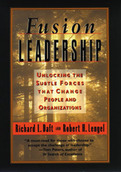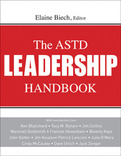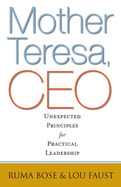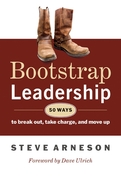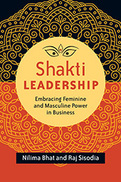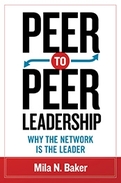2004
Fusion Leadership describes a new way of leading based on "fusion," a coming together of whole individuals to accomplish mutual goals based on shared vision and values. Fusion leaders are those who engage not only the bodies and minds of their employees, but also their hearts and souls. Unlike the traditional, hierarchical "fission" management style used for centuries in business, fusion leadership supports personal growth and ingenuity, qualities that facilitate change.
Building on the New Science assumptions that organizations can act as living systems and evolve with changing conditions, Fusion Leadership shows, in practical terms, how individuals and organizations can grow together. Fusion, the authors reveal, unleashes subtle forces-mindfulness, vision, heart, courage, communication, and integrity-which can fundamentally transform organizations.
Mindfulness, they say, represents independent thinking, personal creativity, and an open mind. Vision encompasses the higher purpose toward which people work. Heart represents caring and compassion-positive feelings that underlie workplace relationships. Communication influences vision, values, and emotions; it also involves listening and discerning. Courage motivates people to take risks. Integrity involves honesty, trust, and service-going beyond self-interest to give something to the organization. Through stories, parables, and probing questions, the book helps readers begin to revive these qualities within themselves. It also shows the value and applications of social technologies based on conversation-including dialogue, future search, and whole-scale change-which leaders can use to create organizational fusion, unleashing new synergies among people and achieving far-reaching results.
- Richard Daft is the author of two leading management textbooks, each of which has sold over 230,000 copies: Organization Theory and Design, 6th Edition and Management. 4th Edition
- Offers a striking new metaphor for managing and leading organizations-based on the principle of fusion (a joining together) rather than fission (a splitting apart or separation)
- Presents practical applications of fusion technologies-doable solutions to real problems-and inspires leadership and change
- Provides a personal, practical bridge to New Science and Systems Theory ideas
Provides a complete overview and practical strategies on a full range of leadership topics.
Featuring a who's who of leadership gurus, The ASTD Leadership Handbook is an exciting compilation of insights, ideas, and tools that will enable individuals, teams, and organizations to fully develop their leadership capabilities. It provides a complete overview of leadership and covers a full range of topics, including competencies, development, attributes, and current challenges, taking a broad view of what leadership means. Editor Elaine Biech and her team worked to carefully match up topics with the leading authorities: William Byham on leadership development, Ken Blanchard on ethics, Bill George on authenticity, John Kotter on leading change, Marshall Goldsmith on coaching, Dave Ulrich and Norm Smallwood on getting results, Patrick Lencioni on teams, Leongard Goodstein on strategic planning, Frances Hesselbein on leading the workforce of the future, and many more.
The ASTD Leadership Handbook's five sections -- Leadership Competencies, Leadership Development, Characteristics of Successful Leaders, Contemporary Leadership, and the Global Role of Leadership -- cover all the major leadership areas. Chapters are written from a practical perspective, enabling readers to immediately put the wisdom and experience of the authors to use in their own lives and organizations. The book also includes three dozen tools to help you apply the concepts, such as John Kotter's Eight-Step Change Model, Bill Gentry's Checklist for Avoiding Leader Derailment, Marshall Goldsmith's Mini Coaching Survey, Beverly Kaye and Sharon Jordan-Evan's Jerk Checklist, and Leonard Goodstein's Applied Strategic Planning Model. These tools are available as free downloads on the book's accompanying website.
This handbook sets itself apart in a crowded field by emphasizing leadership development and providing practical approaches to address this crucial need. When you pick up The ASTD Leadership Handbook you hold amost 2,000 years of experience in your hands. This will surely be the definitive leadership resource for many years to come.
Selected chapters from The ASTD Leadershipp Handbook are also available for sale in PDF format: Leadership Whitepapers.
-
Provides a complete overview and practical strategies on a full range of leadership topics
-
Contributors include more than forty-five renowned experts in the leadership field
-
Includes more than sixty activities, tools, and assessments for application of principles and concepts
2011
Offers ten suprising leadership lessons and shows how they can improve snd enrich any leader or organization.
When most people think of Mother Teresa, they think of a saint—a spiritual hero of extraordinary humanitarian accomplishments, a Nobel Peace Prize winner. But Mother Teresa was also the leader of one of the world’s largest and most successful organizations: the Missionaries of Charity. Since founding it in 1948 she has raised millions of dollars and, with over a million volunteers in more than 100 countries, it remains one of the most recognized brands in the world. How did one nun who never received any formal education in business build such an impressive global organization? Frank, realistic, and firmly grounded in practicality, Mother Teresa’s leadership style helped to inspire and organize people across the world. This book shares ten essential leadership principles drawn from Mother Teresa’s example and applies them to today’s business world. Authors Ruma Bose, an entrepreneur who volun- teered with Mother Teresa, and Lou Faust, a leading business expert, are the first to examine her in this light—as a leader whose management style and dedication to a singular vision led to one of the world’s most unlikely success stories. Mother Teresa may have been a saint, but her spectacular success was not a product of divine providence. Her genius was the simplicity of her vision and her dedication to its implementation. It was in the way she treated her people, refusing to distance herself from the everyday work of a typical sister of the Missionaries of Charity. It was in how she handled tough choices—like accepting donations from brutal Haitian dictator François “Papa Doc” Duvalier. These were the principles that made her the great leader of a global organization, and they can be applied by anyone in any organization—no sainthood required.2010
- Arneson was named one of America’s top leadership consultants by Leadership Excellence magazine in 2008
- Enables leaders at all levels to design a complete self-directed leadership development program
- Concise, accessible, practical and flexible
Leadership training can be inconsistent in the best of times. In tough economic times it’s often one of the first things that even the most progressive companies cut back on. And you can’t necessarily depend on finding that mentor you’ve been looking for either. Now more than ever, if you’re going to advance your career you need to lift yourself up by your own bootstraps. But not entirely: Steve Arneson is here to give you a boost.
In Bootstrap Leadership Arneson, one of America’s top leadership coaches, offers a complete blueprint for designing your own personal leadership development program. In fifty brief, to-the-point chapters he provides practical ideas and techniques that have been proven successful in his work with executives at Fortune 500 companies like AOL, PepsiCo and Capital One. Surprisingly, most of these ideas cost nothing to implement, nor do they require any elaborate equipment or infrastructure—they’re open to anyone with sufficient initiative, drive and ambition.
The chapters are entirely self-contained and can be read in any order and at any pace. You can read one a week and you’ll have a comprehensive year-long self-improvement program (with two weeks off for vacation). Or you can choose a chapter that speaks to a particular challenge you’re facing at work or one that just seems intriguing. There’s a self-assessment at the beginning of the book to suggest specific chapters that fit your developmental needs.
No one is going to just hand that next promotion. You have to earn it by developing and demonstrating your leadership skills. And ultimately it’s not just about you—true leaders make everyone around them better. Bootstrap Leadership shows you how.
2016
Too many people, men and women alike, have bought into a notion of leadership that exclusively emphasizes traditionally “masculine” qualities: hierarchical, militaristic, win-at-all-costs. The result has been corruption, environmental degradation, social breakdown, stress, depression, and a host of other serious problems. Nilima Bhat and Raj Sisodia show us a more balanced way, an archetype of leadership that is generative, cooperative, creative, inclusive, and empathetic. While these are traditionally regarded as “feminine” qualities, we all have them. In the Indian yogic tradition they're symbolized by Shakti, the source that powers all life.
Through exercises and inspirational examples, Bhat and Sisodia show how to access this infinite energy and lead with your whole self. Male or female, leaders who understand and practice Shakti Leadership act from a consciousness of life-giving caring, creativity, and sustainability to achieve self-mastery internally and be of selfless service to the world.
The idea of hierarchy is breaking down everywhere, from politics to religion to social relationships-why should leadership be any different?
Our leadership models are stuck in an Industrial Age, top-down mentality. But in our complex, data-drenched, 24/7 world, there is simply too much information coming from too many different directions too quickly for any one leader or group to stay on top of it. Hierarchy is breaking down everywhere—why should leadership be any different? Inspired by the peer-to-peer model of computing used in social networking and crowdsource technologies, Mila Baker shows a new way to lead. Organizations, she says, must become networks of "equipotent" nodes of power—peer leaders. The job of the leader is now to set the overall goals and direction and optimize the health of that network, not tell it what to do. In these organizations, leadership roles shift rapidly to fit the needs of any given situation. Information flows freely so those who need it can find it easily and act on it immediately. Feedback becomes an organic part of the workflow, enabling rapid course corrections. Baker shows how companies like Gore and Herman Miller have achieved long-term success practicing these principles and provides a structure that any organization can adapt to build flexibility, resiliency, and accountability.

